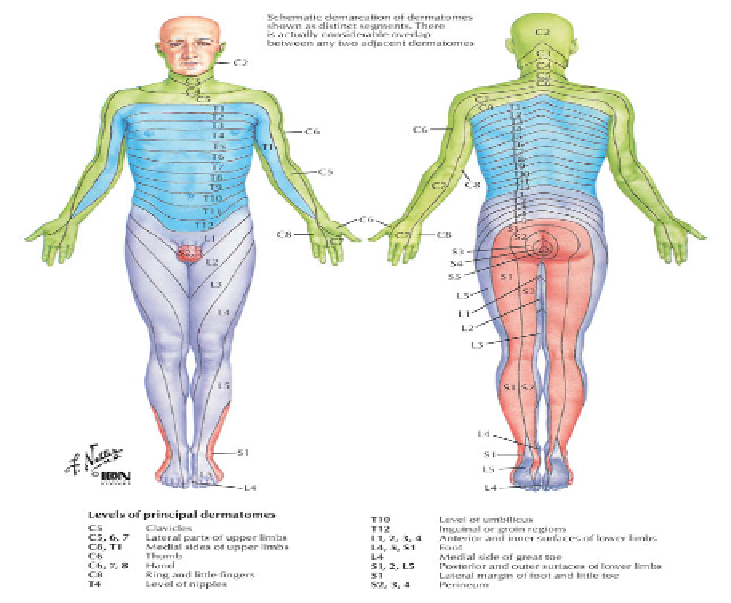Information Technology Reference
In-Depth Information
Fig. 8.
A Dermatomes map used by clinicians to classify pain
•
Penalty Point Methods
. Using this method, pain drawings are scored using
the penalty point system described by [43], where points are assigned for any
not natural marking of pain on the diagram, which could be marking indicat-
ing pain outside the body, using extra words or symbols to describe pain or
its severity, as well as pain in specific unusual body areas. The drawings then
are classified as “normal” if 2 or fewer points are assigned, or as “abnormal”
if the points are more than 2 [34]. Moreover, as cited in [48], by using such a
penalty-point scoring method, it was found that pain drawings could also
predict 93% of the patients that needed further psychological evaluation just
by looking at their completed pain drawing, therefore in that case pain draw-
ings could also be used as an economical psychological tool, besides their
normal pain location recording use.
•
Visual Inspection Methods.
As cited in [48], pain drawings are usually evalu-
ated with these methods by experienced evaluators, who are able by looking
at the drawing to say what is the situation with the patient, and if further
psychological testing is needed. To this end, [51] initially used these meth-
ods in their study to identify patients suffering from lumbar disc herniation.
The results of their study showed that pain drawings could be classified as
either
indicative
or
non-indicative
of symptomatic disc disease, depending

Search WWH ::

Custom Search